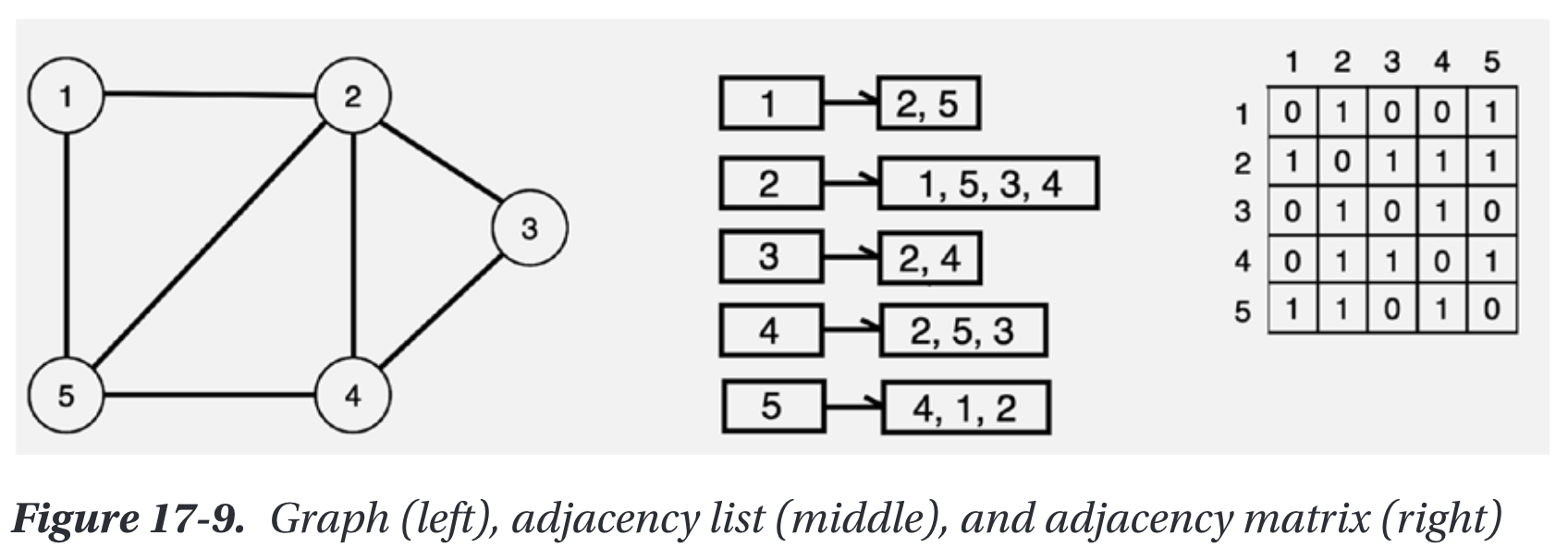Undirected graphs are graphs that do not have a direction between edges. The edge implies a mutual connection between the two nodes without a direction. A real-life example of an undirected graph relationship is friendship. Friendship occurs only if both parties mutually acknowledge the relationship. Values of the edges within a friendship graph may indicate how close the friendship is. Figure 17-8 is a simple undirected graph with five vertices and six nondirectional edges with weights.
[…] Figure 17-8. Undirected graph with weights
There are various ways to represent undirected graphs as a data structure class. Two of the most common ways to do this are by using an adjacency matrix or an adjacency list. The adjacency list uses a vertex as the key for nodes with its neighbors stored into a list, whereas an adjacency matrix is a V by V matrix with each element of the matrix indicating a connection between two vertices. Figure 17-9 illustrates the difference between an adjacency list and an adjacency matrix (This book covers only adjacency lists).

Figure 17-9. Graph (left), adjacency list (middle), and Adjacency Matrix (right)
~
BAE, Sammie, 2019. JavaScript Data Structures and Algorithms: An Introduction to Understanding and Implementing Core Data Structure and Algorithm Fundamentals. Berkeley, CA: Apress : Imprint: Apress. ISBN 978-1-4842-3988-9, p. 278